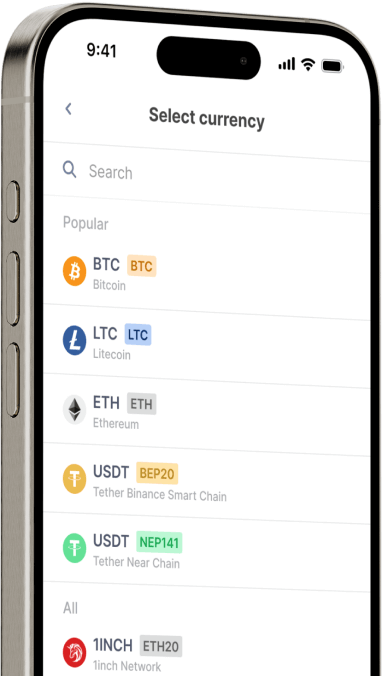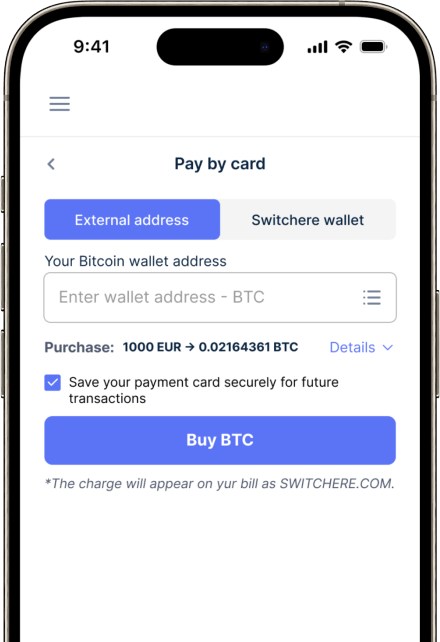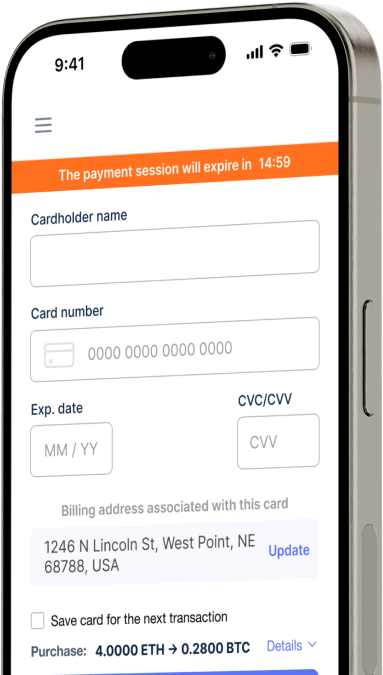Convertissez
Chilean peso (CLP) en Dai (DAI) instantanément
Achetez Dai (DAI) avec Chilean peso (CLP) facilement sur Switchere et bénéficiez de transactions rapides et sécurisées.
A propos de
Dai (DAI)
DAI (DAI) est une stablecoin décentralisée pionnière, soft-pegged au dollar américain, fonctionnant sur la blockchain Ethereum en tant que jeton ERC-20. Son objectif principal est de fournir un actif numérique transparent et résistant à la censure qui maintient une valeur stable, offrant un bloc de construction crucial pour l'écosystème de la finance décentralisée (DeFi). Régie par la communauté MakerDAO par le biais du jeton de gouvernance MKR, la stabilité du DAI est assurée par un système sophistiqué de surcollatéralisation. Les utilisateurs génèrent des DAI en verrouillant des actifs cryptographiques approuvés, tels que l'ETH ou le WBTC, dans des contrats intelligents connus sous le nom de Maker Vaults (anciennement Collateralized Debt Positions ou CDP). Ce processus garantit que chaque DAI en circulation est soutenu par une plus grande valeur de garantie, ce qui atténue les risques de volatilité.
La technologie de base s'appuie sur les capacités des contrats intelligents d'Ethereum pour gérer ces chambres fortes, automatiser les liquidations si la valeur du collatéral tombe en dessous d'un certain seuil, et maintenir le peg grâce à divers mécanismes de stabilité, notamment les frais de stabilité et le taux d'épargne des DAI (DSR). Le DSR permet aux détenteurs de DAI d'obtenir un rendement sur leurs avoirs directement sur la chaîne. La fonction du jeton d'utilité DAI est principalement de servir de moyen d'échange stable, d'unité de compte et de réserve de valeur dans d'innombrables applications DeFi, y compris les protocoles de prêt, les échanges décentralisés et les stratégies d'agriculture de rendement. En tant que l'une des monnaies stables adossées à des cryptomonnaies les plus largement intégrées, DAI est un élément fondamental de l'infrastructure Web3, permettant des transactions peer-to-peer et des instruments financiers complexes sans dépendre d'intermédiaires traditionnels.
Acheter d'autres 150+ crypto-monnaies pour Chilean peso (CLP)
Autres pièces pour Chilean peso (CLP)
-
CLP pour ZRX
-
CLP pour 1INCH
-
CLP pour AAVE
-
CLP pour ACH
-
CLP pour ALGO
-
CLP pour TLM
-
CLP pour ANKR
-
CLP pour APE
-
CLP pour NFT
-
CLP pour API3
-
CLP pour APT
-
CLP pour ARPA
-
CLP pour AUDIO
-
CLP pour AVAX
-
CLP pour AVAX
-
CLP pour AXS
-
CLP pour BADGER
-
CLP pour BAL
-
CLP pour BNT
-
CLP pour BAT
-
CLP pour BNB
-
CLP pour BSW
-
CLP pour BSV
-
CLP pour BLUR
-
CLP pour BONE
-
CLP pour CTSI
-
CLP pour CELR
-
CLP pour CELO
-
CLP pour CEL
-
CLP pour LINK
-
CLP pour CHZ
-
CLP pour CHR
-
CLP pour C98
-
CLP pour COMP
-
CLP pour CFX
-
CLP pour PEOPLE
-
CLP pour CVX
-
CLP pour ATOM
-
CLP pour CTC
-
CLP pour CRV
-
CLP pour DAI
-
CLP pour DASH
-
CLP pour MANA
-
CLP pour DENT
-
CLP pour DGB
-
CLP pour DYDX
-
CLP pour XEC
-
CLP pour EOS
-
CLP pour ETC
-
CLP pour ENS
-
CLP pour ETHW
-
CLP pour FET
-
CLP pour FIL
-
CLP pour FLOKI
-
CLP pour GALA
-
CLP pour GNO
-
CLP pour ONE
-
CLP pour HBAR
-
CLP pour HOT
-
CLP pour HOOK
-
CLP pour ICX
-
CLP pour ILV
-
CLP pour IMX
-
CLP pour INJ
-
CLP pour ICP
-
CLP pour IOST
-
CLP pour IOTX
-
CLP pour JASMY
-
CLP pour JST
-
CLP pour KAVA
-
CLP pour KCS
-
CLP pour KSM
-
CLP pour KNC
-
CLP pour LDO
-
CLP pour LQTY
-
CLP pour LPT
-
CLP pour LOOKS
-
CLP pour LRC
-
CLP pour LUNA
-
CLP pour MKR
-
CLP pour MASK
-
CLP pour EGLD
-
CLP pour ALICE
-
CLP pour NEAR
-
CLP pour XEM
-
CLP pour NEXO
-
CLP pour NOT
-
CLP pour NMR
-
CLP pour OKB
-
CLP pour OMG
-
CLP pour ONT
-
CLP pour EDU
-
CLP pour OP
-
CLP pour OGN
-
CLP pour CAKE
-
CLP pour PAXG
-
CLP pour PENDLE
-
CLP pour DOT
-
CLP pour POL
-
CLP pour QTUM
-
CLP pour QNT
-
CLP pour RDNT
-
CLP pour XRD
-
CLP pour RVN
-
CLP pour REN
-
CLP pour RSR
-
CLP pour RLC
-
CLP pour RPL
-
CLP pour SFP
-
CLP pour SHIB
-
CLP pour SKL
-
CLP pour SXP
-
CLP pour STND
-
CLP pour STG
-
CLP pour XLM
-
CLP pour GMT
-
CLP pour STORJ
-
CLP pour STMX
-
CLP pour SUSHI
-
CLP pour SNX
-
CLP pour USDT (Polygon)
-
CLP pour USDT (AVAC)
-
CLP pour USDT (BEP20)
-
CLP pour USDT (ERC20)
-
CLP pour USDT (SPL)
-
CLP pour USDT (NEP141)
-
CLP pour USDT (FA2)
-
CLP pour USDT (TRC20)
-
CLP pour USDT (JETTON)
-
CLP pour XTZ
-
CLP pour GRT
-
CLP pour SAND
-
CLP pour TFUEL
-
CLP pour THETA
-
CLP pour RUNE
-
CLP pour TON
-
CLP pour TUSD (BEP20)
-
CLP pour TUSD (TRC20)
-
CLP pour TWT
-
CLP pour UOS
-
CLP pour UMA
-
CLP pour UNI
-
CLP pour USDC (Polygon)
-
CLP pour USDC (SPL)
-
CLP pour USDC (OP)
-
CLP pour USDC (BEP20)
-
CLP pour USDC (AVAC)
-
CLP pour USDC (ARB)
-
CLP pour USDC (ERC20)
-
CLP pour VET
-
CLP pour VRA
-
CLP pour WAXP
-
CLP pour WOO
-
CLP pour WLD
-
CLP pour WBTC
-
CLP pour WMINIMA
-
CLP pour XDC
-
CLP pour YFI
-
CLP pour YGG
-
CLP pour ZIL
Comment acheter des Dai (DAI)
Questions fréquemment posées
-
Qu'est-ce que la paire de trading CLP/DAI et pourquoi est-elle importante au Chili ?
La paire CLP/DAI représente le taux de change entre le peso chilien (CLP) et le Dai (DAI), un stablecoin décentralisé sur la blockchain Ethereum, légèrement indexé sur le dollar américain. Son importance au Chili réside dans le fait qu'elle constitue une rampe d'accès directe en monnaie fiduciaire au monde de la finance décentralisée (DeFi). Elle permet aux utilisateurs de convertir leur monnaie locale en un actif numérique stable, atténuant ainsi la volatilité de la monnaie locale et donnant accès aux applications financières mondiales et sans permission construites autour du protocole MakerDAO et de l'écosystème Ethereum plus large.
-
Qu'est-ce qui rend le stablecoin DAI unique par rapport aux autres dollars numériques lors de l'utilisation d'une rampe d'accès en CLP ?
La principale distinction de DAI est sa décentralisation. Contrairement aux stablecoins émis de manière centralisée, qui sont adossés à des réserves détenues par une seule entreprise, le DAI est généré par des prêts sur-collatéralisés sur le protocole MakerDAO. Ce système basé sur des contrats intelligents le rend plus transparent et résistant à la censure. Pour un utilisateur convertissant depuis le CLP, cela signifie détenir un actif numérique dont la stabilité est maintenue par une communauté décentralisée et des garanties en chaîne, plutôt que de dépendre des politiques et des réserves d'une entité privée.
-
Dois-je suivre un processus KYC pour acquérir du DAI avec des CLP ?
Oui, dans la plupart des cas. Si vous utilisez une plateforme d'échange de cryptomonnaies centralisée comme rampe d'accès en monnaie fiduciaire, vous devrez suivre un processus de connaissance du client (KYC) et de lutte contre le blanchiment d'argent (AML). Cela implique de soumettre des documents d'identification personnels. Il s'agit d'une exigence réglementaire standard pour les plateformes qui gèrent des monnaies fiduciaires comme le peso chilien. Bien que certaines plateformes P2P puissent avoir des exigences plus souples, les traders réputés exigeront également généralement une forme de vérification d'identité pour un trading sécurisé.
-
Quelles sont les méthodes courantes pour acheter du DAI avec des pesos chiliens (CLP) ?
Pour acheter du DAI avec des CLP, les utilisateurs au Chili utilisent généralement soit une plateforme d'échange de cryptomonnaies centralisée opérant en Amérique latine, soit une plateforme de trading de pair à pair (P2P). Les plateformes centralisées exigent une conformité KYC/AML et prennent souvent en charge les dépôts directs en CLP via 'transferencia bancaria' (virement bancaire). Les plateformes P2P mettent directement en relation acheteurs et vendeurs, offrant diverses méthodes de paiement locales, y compris des virements bancaires vers des institutions comme BancoEstado, ce qui offre plus de flexibilité pour trouver une transaction appropriée.
-
Quels sont les frais impliqués dans une transaction blockchain typique de CLP à DAI ?
Une transaction de CLP à DAI implique plusieurs frais potentiels. Premièrement, la plateforme d'échange de cryptomonnaies ou la plateforme P2P facturera des frais de transaction, soit un taux fixe, soit un pourcentage. Deuxièmement, votre banque chilienne peut facturer des frais pour la 'transferencia bancaria' afin d'approvisionner votre compte d'échange. Enfin, une fois que vous possédez le DAI, le déplacer de la plateforme d'échange vers un portefeuille numérique personnel entraînera des frais de réseau Ethereum, appelés 'gaz'. Ces frais de gaz, payés en ETH, peuvent varier considérablement en fonction de la congestion du réseau.
-
Comment dois-je stocker en toute sécurité mes DAI après les avoir achetés avec des CLP ?
Pour une sécurité optimale, vous devriez transférer vos DAI de la plateforme d'échange vers un portefeuille numérique auto-hébergé où vous contrôlez les clés privées. Le DAI est un jeton ERC-20, ce qui le rend compatible avec n'importe quel portefeuille basé sur Ethereum. Les options incluent des portefeuilles logiciels comme MetaMask pour un accès facile aux applications DeFi, ou des portefeuilles matériels (par exemple, Ledger, Trezor) pour le plus haut niveau de sécurité en gardant vos clés hors ligne. Laisser vos actifs numériques sur une plateforme d'échange les expose à des risques spécifiques à la plateforme.




